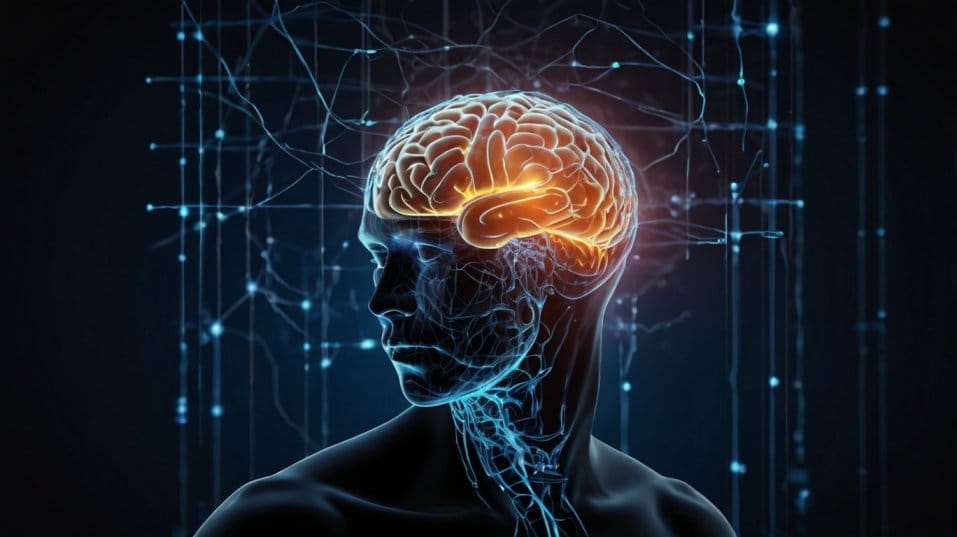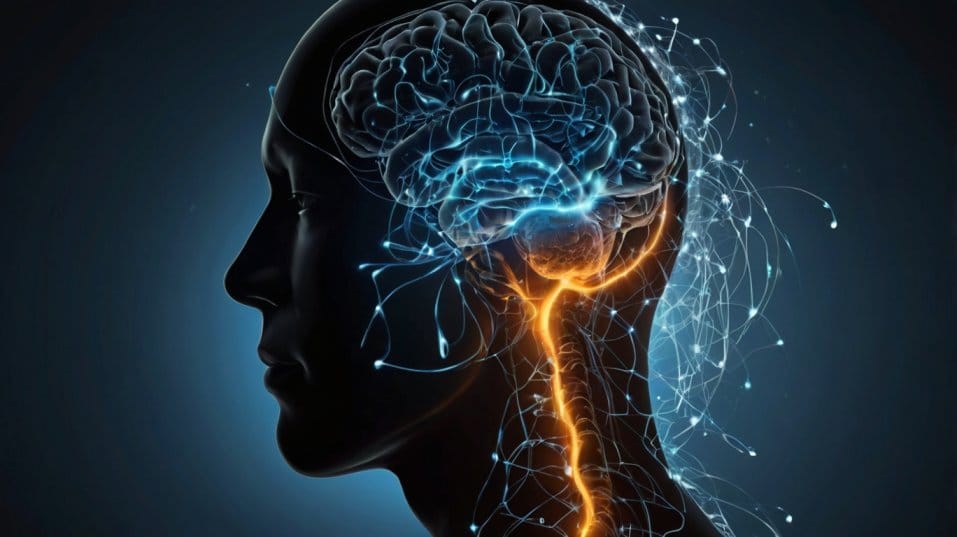Why Mindfulness Changes Brain Wave Activity
Discover how mindfulness alters brain waves to enhance focus, creativity, and stress resilience. Learn the neuroscience behind these benefits.

Why do some professionals stay sharp under pressure while others get mentally drained? The answer lies in brain waves—those invisible rhythms shaping focus, stress, and creativity.
Neuroscience shows that mindfulness can fine-tune these waves, sharpening concentration, easing anxiety, and fueling high-performance thinking.
By understanding this connection, professionals can train their minds to work smarter, not harder, and unlock a sustainable path to resilience and peak productivity.
How Brain Waves Shape Mental States
The brain operates across a spectrum of electrical frequencies, each linked to specific mental states.
While all five types—delta, theta, alpha, beta, and gamma—function simultaneously, certain frequencies dominate depending on our activities and moods.
Delta waves (0.5–4 Hz)
Governs deep sleep and physical restoration, crucial for cellular repair and immune function.
Theta waves (4–8 Hz)
Promotes relaxation, creativity, and subconscious insights, aiding in memory formation and problem-solving.

Alpha waves (8–14 Hz)
Encourages calmness, alertness, and flow states, facilitating mental coordination and stress reduction.
Beta waves (14–30 Hz)
Supports active thinking, focus, and problem-solving but can also contribute to anxiety and mental fatigue when overactive.
Gamma waves (30–100 Hz)
Enhances deep learning, peak cognition, and awareness, playing a key role in information processing and intelligence.
Mindfulness has the power to regulate these frequencies, preventing overactivity in stress-related waves while amplifying those that foster clarity, innovation, and resilience.
By intentionally tuning brain wave activity, individuals can cultivate a mental state that supports sustained performance and overall well-being.
The Science of Mindfulness and Brain Waves
Researchers have mapped the impact of mindfulness on brain waves, revealing how intentional practice can strengthen neural efficiency and emotional stability.
By influencing different wave patterns, mindfulness helps professionals achieve the right mental state for each task—whether it’s deep focus, creative problem-solving, or stress recovery.
One of the most critical of these is alpha waves, which serve as a bridge between alertness and relaxation.
Alpha Waves: The Key to Relaxed Focus
Alpha waves act as a gateway between wakefulness and relaxation, making them crucial for deep work and creativity.
Mindfulness meditation has been shown to increase alpha activity, helping professionals enter a state of relaxed focus where distractions fade, problem-solving improves, and cognitive flexibility strengthens.
Research using electroencephalography (EEG) demonstrates that mindfulness practitioners consistently exhibit elevated alpha wave patterns, particularly in the prefrontal cortex—the area responsible for executive function and decision-making.
This shift not only improves productivity but also supports emotional balance, reducing impulsivity and fostering clearer communication in high-stakes situations.
Deep breathing techniques, such as box breathing (inhaling, holding, exhaling, and pausing for equal counts), are particularly effective at amplifying alpha waves.
By engaging in breath awareness exercises, professionals can reset their mental state, preventing stress from hijacking productivity.
Theta Waves: Unlocking Creativity and Intuition
Ever had a brilliant idea come to you in the shower or just before falling asleep? That’s theta wave activity at play. These waves are associated with deep relaxation, heightened intuition, and subconscious processing.
Mindfulness techniques—especially body scans and visualization exercises—elevate theta activity, creating a fertile ground for creative breakthroughs and emotional resilience.
Long-term mindfulness practitioners often report improved memory consolidation and problem-solving skills. Theta waves also facilitate neuroplasticity, the brain’s ability to rewire itself based on experience.
This explains why mindfulness not only enhances present-moment awareness but also strengthens long-term cognitive adaptability, making it easier to navigate challenges and innovate in professional settings.
Beta Waves: Finding Balance Between Focus and Overload
Beta waves dominate during high-focus tasks, but when overactive, they contribute to stress, anxiety, and mental exhaustion. Mindfulness helps regulate beta waves, ensuring professionals stay sharp without tipping into overdrive.
High beta activity is often linked to the body’s fight-or-flight response, flooding the nervous system with stress hormones like cortisol.
Mindfulness counteracts this effect by activating the parasympathetic nervous system, signaling the brain to shift from a reactive state to one of controlled awareness.
This regulation is critical for individuals in high-pressure environments, where sustained focus is necessary but chronic stress can lead to burnout.
Mindful single-tasking—fully immersing in one task at a time—naturally balances beta wave activity.
Structured breaks, like the Pomodoro technique (25 minutes of focused work followed by a short pause), allow the brain to reset, preventing burnout while maintaining peak performance.
Gamma Waves: Elevating Cognitive Mastery
The highest-frequency brain waves, gamma waves, are linked to advanced cognition, deep learning, and emotional intelligence.
Studies on experienced meditators, including Buddhist monks, reveal significantly increased gamma activity, correlating with improved neural plasticity and cognitive processing speed.
Gamma waves facilitate cross-brain communication, integrating information from multiple brain regions simultaneously.
This is why high gamma activity is associated with peak states of consciousness, heightened perception, and rapid problem-solving abilities.
Mindfulness practices that emphasize gratitude, compassion, and visualization stimulate gamma waves, reinforcing emotional intelligence and perspective-taking.
For professionals navigating high-stakes decisions, incorporating mindfulness techniques that foster gamma activity can enhance strategic thinking and long-term vision.
Visualization exercises, in particular, strengthen the brain’s ability to construct complex mental models, allowing for more effective decision-making and innovation.
Applying Mindfulness for Brain Optimization
To leverage mindfulness for brain wave optimization, integrating a few key techniques into daily routines can make a measurable difference:
Focused Breathing
Slows mental chatter, enhances alpha wave dominance, and improves sustained attention.
Body Scan Meditation
Elevates theta waves, deepening relaxation and unlocking subconscious insights.
Single-Task Mindfulness
Regulates beta waves, preventing cognitive overload while maintaining sharpness.
Visualization Practices
Activates gamma waves, strengthening problem-solving abilities and cognitive agility.
Mindful Walking
Encourages cross-hemisphere brain communication, enhancing cognitive flexibility and stress resilience.
Loving-Kindness Meditation
Stimulates gamma waves, fostering emotional intelligence and reducing interpersonal conflicts.
By embedding these habits into daily life, professionals can train their brains for sustained clarity, efficiency, and emotional resilience.
Final Thoughts: Start Now
Mindfulness isn’t just about relaxation—it’s a tool for cognitive optimization.
Science confirms its ability to reshape brain waves, reducing stress-driven beta activity while amplifying alpha, theta, and gamma waves for enhanced clarity and performance.
The best part? These benefits begin the moment you commit to practicing. Take a deep breath, focus on the present, and start small. Even a few minutes of mindful awareness each day can rewire your brain for sustained success.
Whether it’s a brief breathing exercise before a big meeting or a daily body scan before bed, the key is consistency. Master your brain waves, and you master your mind.




